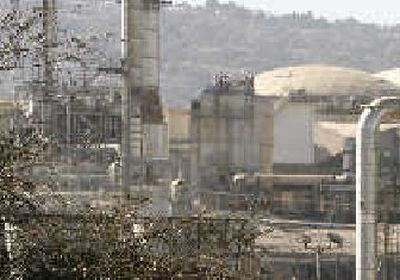Toxic tour takes passengers to sites of pollution nightmares

LOS ANGELES — Every day, tourist buses trundle along the Hollywood Walk of Fame and through Beverly Hills so that sightseers can gawk at celebrities and gasp at their mansions.
A lesser-known tour through the industrial back streets of the county also leaves participants gasping, but for another reason.
“On your left is a smokestack,” guide Jesus Torres points out as he leads the Toxic Tour through neighborhoods in the shadows of oil refineries, factories and slaughterhouses.
The excursions, staged by the watchdog group Communities for a Better Environment, are gaining popularity among policy makers, lawyers and students who want a firsthand look at how pollution often falls hardest on poor, minority areas.
The buses visit areas that have been the site of environmental nightmares. Among its stops are “Asthma Town” in Huntington Park and an elementary school that was plagued by miscarriages among workers. Riders also breathe in the stench of slaughtered pigs and the stink of diesel fuel, paint and other chemicals.
“The big thing with the tours is to put a human face on this,” said Bill Gallegos, executive director of Communities for a Better Environment.
About 200 people took the free tour last year, compared with just a few in 1995, when the effort began, organizers said.
Rick Loya went when he was a councilman in Huntington Park and the city was the site of a mountain of concrete collected from freeway damage during the 1994 Northridge earthquake. He was hospitalized when one of his lungs partially collapsed from breathing airborne debris at the site.
“The first time I went out there I thought: What in the world is happening to me?” he recalled. Still, as he lobbied for a cleanup, he felt compelled to grab a respirator and return.
The 600,000 tons of concrete remained in the city for more than a decade before it was removed last year.
“We called it the mountain of death,” said resident Linda Marquez, who often greets the tour buses that still trek to her street to gauge the lingering impact of the problem. “We had to close our windows, our doors. We couldn’t have the kids out too long because their eyes would tear and noses would run.”
After leaving Huntington Park, the bus crosses the Alameda Corridor, used each day by 14,000 trucks and dozens of freight trains that service the giant Los Angeles-Long Beach port complex. Along the corridor is Wilmington, where trains thunder past homes. At night, a giant oil refinery spews smoke.
The next stop is Tweedy Elementary School in South Gate, where an accidental release of chlorine gas in 1986 from a nearby factory sent 76 people, including three dozen children, to hospitals to treat nausea and respiratory and eye problems.